
Ever since Eden was lost, we have been trying to find it again. Columbus and the Spanish conquistadors that followed him identified various parts of the Americas as the Garden of Eden. Confident claims for its location have been made for Mesopotamia, Armenia, Iran, Jackson County Missouri (according to some Mormons), and Bedford (according to the Panacea Society).
Many places have been named Eden in hope or tribute: Eden, County Antrim; Eden, New South Wales; the Eden Valley, Cumbria; the Eden District, South Africa, Een (formerly known as Eden) in the Netherlands, the Eden Project in Cornwall; and the Edens of the United States to be found in Arizona, Idaho, Illinois, Indiana, Kansas, Kentucky, Louisiana, Maryland, Minnesota, Mississippi, New York, North Carolina, South Dakota, Texas, Utah, Vermont, Washington, Wisconsin and Wyoming.
Another place where Eden could have been found is Strood.
Strood is a town in north Kent, beside the River Medway, opposite Rochester (my home town). It is a place more travelled through than visited, more functional than lovely – at least, until one looks more closely.
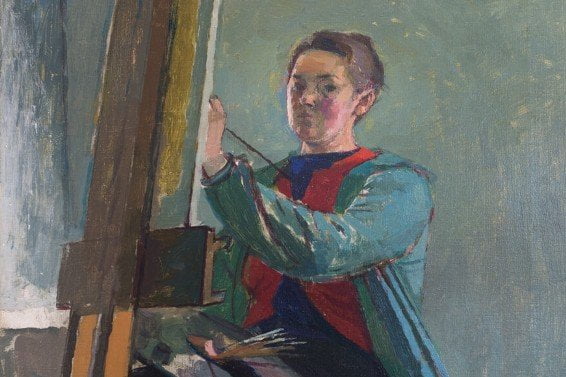
Strood was, for many years, the home of the artist Evelyn Dunbar (1906-1960). She had a fitful career, most notably serving as the only salaried female artist appointed by the War Artists’ Advisory Committee (WAAC) during the Second World War. In recent years, however, particularly after the discovery of 500 previously unknown works in a house in Biddenden in 2012, followed by the Pallant House Gallery exhibition in 2015-16, Evelyn Dunbar: the Lost Works, her reputation has grown considerably. She was an artist with a distinctive vision, whose seemingly unassuming but in fact acute observations of women at work were grounded in her home life in Strood. Specifically, her art grew out of the family garden.

William Dunbar, her father, was a Scottish draper who settled in the Rochester and Strood area, and prospered. In 1924 he bought ‘The Cedars’, a large house on Strood Hill road, built on the site of a former mill, on sloping ground overlooking the two towns and the river that separates them. The chief attraction for the family was the garden, which extended north-eastwards up the slope behind the house. It was 2.5 acres in size, with a lawn, vegetable patches, apple trees, paths and a buttressed brick wall, all of which feature in ‘Winter Garden’ above. The painting also shows ‘The Cedars’, in the background to the right, with its distinctive square tower added to the top of the house by William Dunbar: originally for his wife, who was a painter herself, but soon adopted as a studio by the daughter.
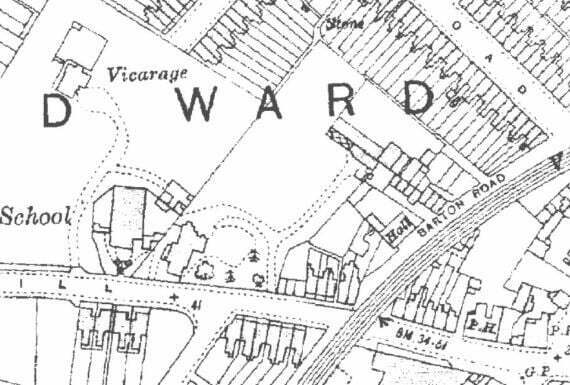
Evelyn Dunbar depicted the garden many times. From her assorted paintings and sketches, much of it can be recreated. Every corner and every angle was meaningful for the artist, each contributed to the whole. However, what is important is not so much the specifics of the garden’s geography as the idea of the garden, and of people’s relationship to it. Herein lie the distinctive qualities of her art. Firstly, there is the preference for the natural, tended world – Dunbar seldom painted interiors. In such works, again and again she depicts people (usually women) bent over their work, methodically caring for their world. Such, the paintings seem to say, is our lot in life.
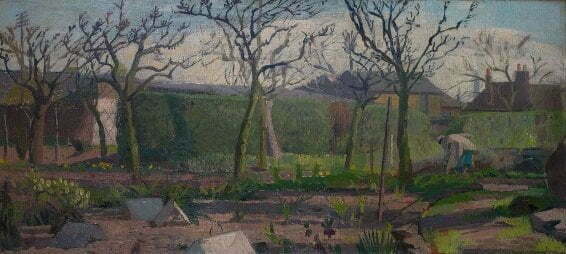
Secondly, there is the focus on women. Though male members of the family, and the gardeners they employed, occasionally appear, the essential subjects are the Dunbar women – Evelyn herself, her mother Florence (primary architect of the garden) and Evelyn’s elder sisters Jessie and Marjorie. Florence features in the background of ‘The Garden at The Cedars’, in the background as a part of the garden rather than its subject, fork dug into the earth, binding her to the world.

Thirdly is the point of view. Dunbar had a marked preference for painting her figures as though looking down on them. Although the tower studio gave Dunbar a commanding view of the area, her garden paintings are at a lower angle, yet frequently still looking down. She hovers above her subjects, in the garden and in much of her later work. It is the world as seen by angels on step ladders.
The religious angle is pertinent. Dunbar was a Christian Scientist: a creed, once avidly followed by millions following its establishment in the late nineteenth-century, but now in decline. It argues for a rejection, as far as possible, of the material world, in pursuit of the purely spiritual. Notoriously, for some (including Dunbar herself) it means the denial of disease as something physical but rather to be cured by prayer. More generally, it is idealist, devotional, and prelapsarian, seeking to recover what it was to be human before the Fall. Thus the garden is never just a garden, but necessarily an Eden. As her astute nephew and biographer Christopher Campbell-Howes writes:
Parallel with, or contained as a subset within her Christian Science, was Evelyn’s conviction that Creation, symbolised in Genesis as the Garden of Eden but visible and evident everywhere, came with duties and obligations: where it was given to Adam ‘to dress it and keep it’, in the words of Genesis, so it was given to mankind in return for looking after it with devotion, intelligence and hard work.
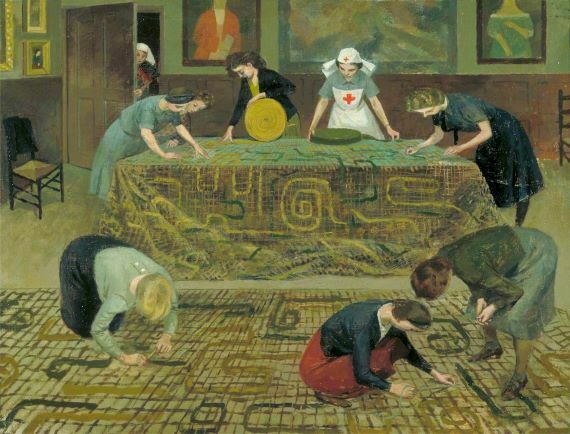
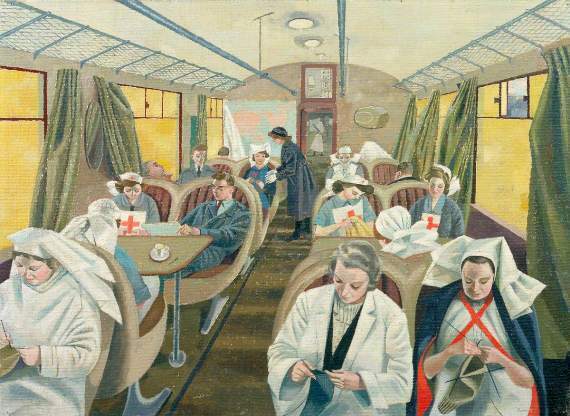
The devotional view, the women seen from above intent on their work, bound to the ground, inhabiting this other Eden, continues with what the artist observed outside Strood. She had the garden in her mind when she portrayed land girls, nurses and Women’s Auxiliary Air Force members in her war artist output (in her application to the WAAC she had stated that her expertise was in ‘land work’ and she was subsequently directed to document women’s home front war work). If anything, the view shaped by Dunbar’s religious persuasion becomes all the more accentuated in her views of farms, fields and hospitals. All are engaged in the holy task, whether or not they are aware of it.
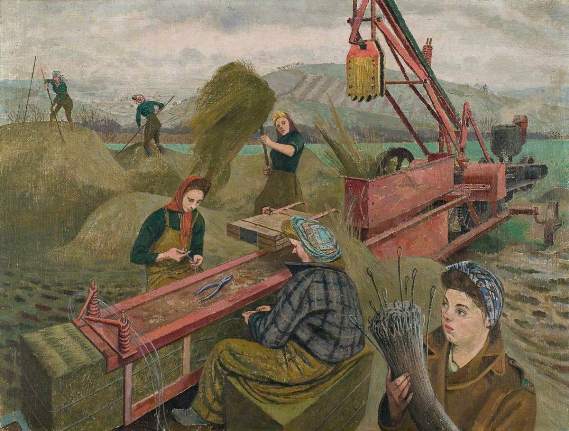
Aside from the war work, gardens feature in what are probably Dunbar’s most popular images today – her illustrations for gardening publications. In 1937, with her Royal College of Art tutor (and lover) Cyril Mahoney, she produced Gardener’s Choice, an illustrated guide to plant cultivation, followed by a commission from Country Life magazine for her to produce their annual Gardener’s Diary for 1938. The latter led to three of her images, for February, April and August, being worked up in oils, then a variation on the set of twelve becoming a single, remarkable artwork, ‘An English Calendar‘. The images bring out the moderately abstract side of her art, showing her people dutifully but playfully tilling the land.
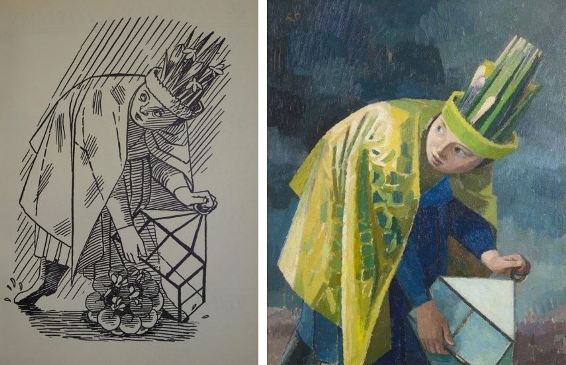
Dunbar exhibited only rarely, and then usually as part of a group of artists. Some of her work was shown in ‘The Blue Gallery’, a space above or adjoining a haberdashery shop run by her sisters at 168 Rochester High Street, in 1938. It was, for the most part, a humble vocation that she followed. Some notice came when the Tate Gallery bought her ‘Study for Decoration: Flight‘ in 1940, then the WAAC work brought passing recognition. She married agricultural economist Roger Folley in 1942, the couple initially living at The Cedars before moving to Oxford and then Wye in Kent, where in 1953 she would hold her only solo exhibition, Evelyn Dunbar – Paintings and Drawings 1938–1953, at Wye College. She died, aged only fifty-three, in 1960.
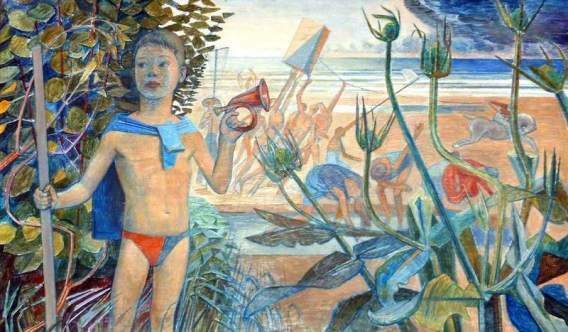
There is a great deal more to Evelyn Dunbar’s art than this short survey might suggest. Her post-War work became increasingly allegorical and symbolic, more obviously striking than the modest tones of her earlier paintings and drawings. Perhaps it was the variety of her work, along with the apparently unassuming nature of some of it, that led to her neglect as an artist. That is hardly the case now. Her reputation is growing, and the cohesiveness of her vision has become ever more apparent. She was an idealist, who sensed and could depict the ideal in the every day.
Perhaps there was some naivety in her idealism – commentators have wondered how she might have responded to some of the horrific aspects of the Second World War, as other war artists had to do – but the idealism should not be tarnished by harsh realities. It is the struggle to realise such an ideal that matters, as Dunbar understood. Everyone should have a garden – to have something to nurture, and in doing so to give something back. Without that, what are we fighting for?
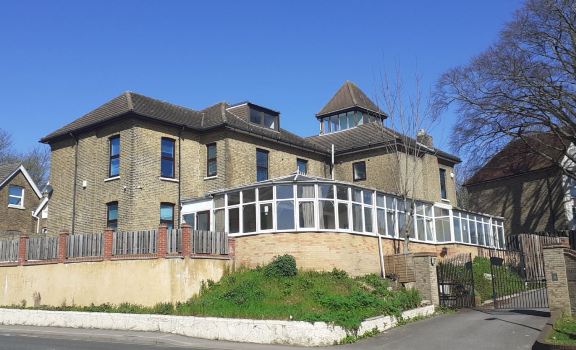
The Dunbar family sold The Cedars in 1946. The building was for a time converted into flats, then became hotel and is now a private home among a gated set of houses. The garden has gone. Homes and drives now fill the space. That which was shaped and tended so devotedly exists only in Evelyn Dunbar’s paintings (and a few family photographs). Only through the art can this particular lost Eden be reimagined and once more fulfil its intended purposes.
A final, peculiar instance of neglect is the absence of Dunbar’s name in the towns where she grew up and produced most of her art. Aside from the occasional mention in local art events, there is nothing – to the best of my knowledge – to commemorate so notable a resident: not a plaque, or a street name, or a building, or a space to exhibit any of her work. Hopefully this will change. It would be a way to start finding Eden once again.
Update: I have been informed that there is a wing named after Evelyn Dunbar at Rochester Grammar School.
Links:
- The essential source of information on Evelyn Dunbar is Evelyn Dunbar: A Life in Painting, an informative and richly-illustrated book written by her nephew Christopher Campbell-Howes, to which this post is greatly indebted. Edited-down section of the book, including its many fine illustrations, can be found on his Evelyn Dunbar blog, including two posts on The Cedars and its garden, part one and part two
- There is handy post on Dunbar, with emphasis on her Kent connections, on Geoff Rambler’s Weird and Wonderful Kent blog, Evelyn Dunbar 1906 – 1960 – artist and “insistent feminist”
- Examples of Dunbar’s art can be found on Art UK, the Imperial War Museums, and on fine art dealer Liss Llewellyn‘s site (including works for sale)
- Gardener’s Choice, the 1937 book by Dunbar and Charles Mahoney, has been republished in paperback by Persephone Books
- The Rochester Art Gallery currently has a fine exhibition by Bryan Hawkins, The Ghosts of Other Things: Art, Archaeology and The Rochester Airport Archaeological Dig, which includes works inspired by Dunbar and examples of publications to which she contributed illustrations. The exhibition runs until 14 January 2023
- What now occupies the space once filled by the lost garden of Evelyn Dunbar can be seen on the satellite view available on Google Maps
Thank you so much Luke for what to me is a new discovery! Exquisite work. Definitely on my to do list now.
Thank you Christine. Happy discovering! I strongly recommend the book Evelyn Dunbar: A Life in Painting.